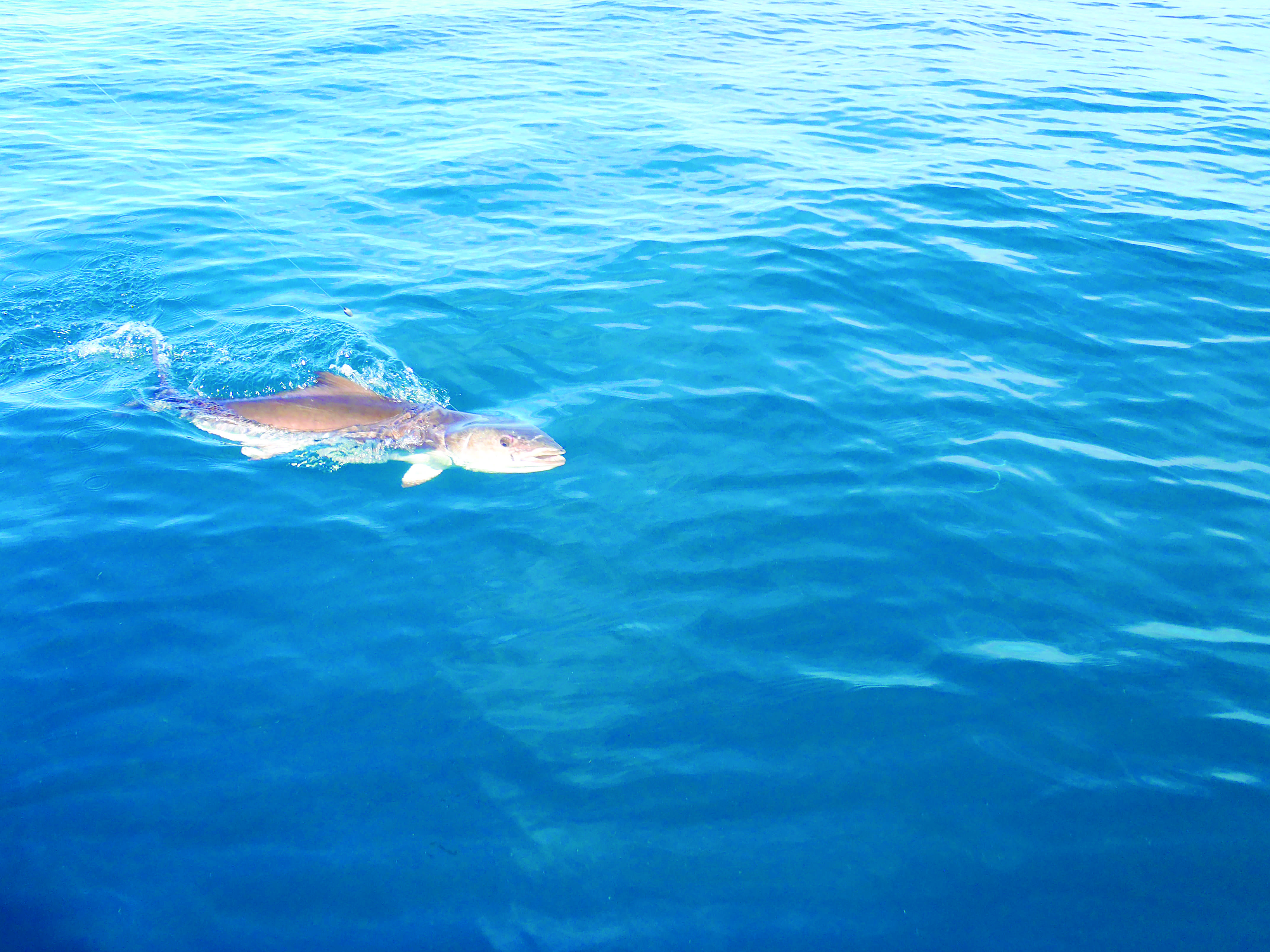
By CAM Staff
A brown form trailing a cruising manta ray like a dog is unexpected in 100 feet or more over a wreck. Sight fishing for cobia is a shallow-water spring and summer deal, right?
From the beaches and bars along the Gulf Coast to Florida’s Atlantic inlets and farther north to the rivers and sounds through the Carolinas, the northward spring and summer migration finds these brown bombers shallow and hounding prey throughout their range. It is a seasonal event countless anglers spend the winter months waiting for.
So why, in the depths of winter, while bottom fishing, were anglers scrambling to find a suitable rig to bait and throw?
Cobia are very temperature sensitive. Seeking out a range between 68 and 72 degrees along with their preferred bait species, the main body of the migratory population runs south each fall. This southward migration generally occurs in deeper water, where temperatures do not swing as dramatically, and winter often finds them offshore, with concentrations of both Gulf and Atlantic fish showing up in south Florida.
Every area in the cobia range has its resident fish, but those that migrate travel extensively. Researchers with the Southern Mississippi Gulf Coast Research Laboratory tagged a fish off Louisiana’s Chandeleur Islands that was recaptured a little more than a year later 1,300 miles away off Hardeeville, S.C. Similarly, a cobia tagged off Pensacola Beach, Fla. was recaptured at Murrells Inlet, S.C. Like they follow rays and turtles, cobia also follow that magic 70-degree water temperature, and encountering them out beyond 200 feet is possible and even likely when they congregate off south Florida. The severity of the winter determines how far south they go and how condensed they’ll be, and we’ve had a mild one so far.
So what’s the takeaway? There’s a good chance of encountering winter cobia anytime there are baits in the water in south Florida.
When the boat first runs up on a wreck, anglers might be better served keeping their eyes on the water rather than stretching out after the run, because even in deep water curious cobia sometimes come to the surface to inspect the newcomer before disappearing. You’ll know they’re there, and you might even get a shot at them if rigged and ready.
Which brings us to the second point. Why wouldn’t you keep a pitch rod armed and ready any time there are baits in the water? Whether there are kites out for sailfish or rigs dropped to the bottom, the potential for a winter cobia in the cooler is always a good thing, and a cobia on the grill is even better.
Hardcore cobia anglers have a wide range of opinions on the best set-up for sight casting to cobia, but generally a long, medium-action rod spooled with at least 30-pound test and a heavier leader is necessary. Pitching a live bait accurately is necessary to catch the fish’s attention and convince it to bite. Lively bait such as pinfish, threadfin herring, blue runner, pilchard or goggle eye, should be kept hooked in a bucket and ready to cast where anglers can get to it quickly. A whole squid, live shrimp or crab are other options, but whatever it is the most important thing is putting it in front of the fish quickly, because the window of opportunity is generally short lived.
And by all means, any time you go out armed for cobia, have the deck ready for a fight. Once gaffed and in the boat, they are notorious for doing damage. So be sure to be prepared!